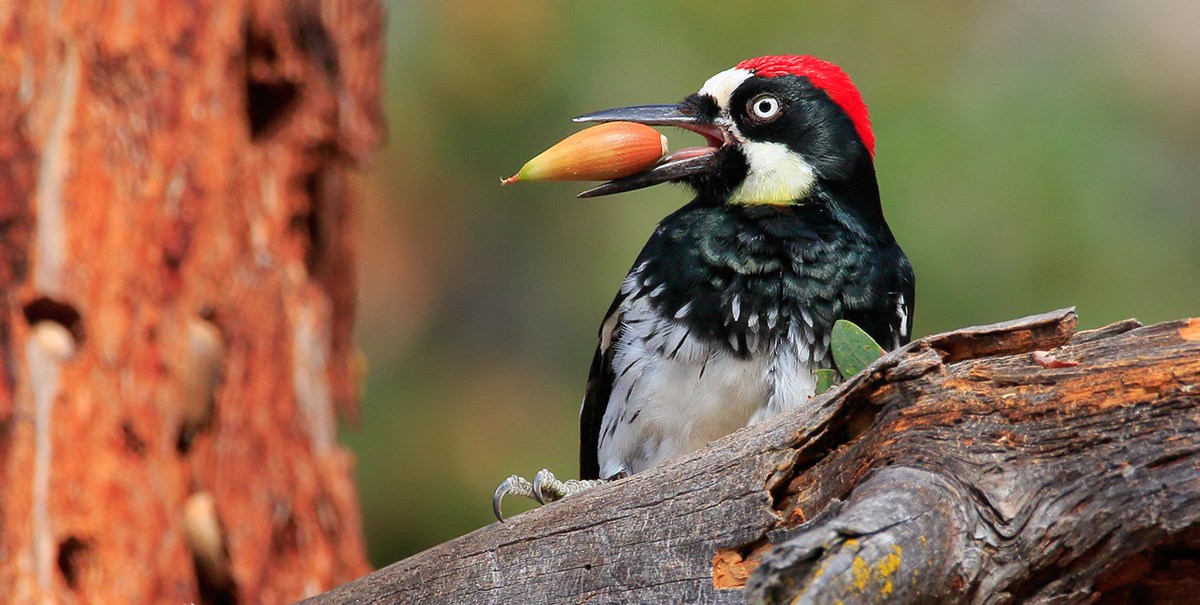Woodpeckers Unleashed: Exploring the Marvels of These Experienced Tree Mountain Climbers
Woodpeckers, with their unique markings and balanced drumming resembling through wooded areas, hold an one-of-a-kind area in the bird world - Woodpeckers in Florida. As we dig right into the detailed details of woodpeckers' nesting habits, feeding strategies, and the recurring conservation initiatives to secure these exceptional birds, a much deeper gratitude for their area in nature unfolds.
Makeup and Adaptations
When examining the composition and adaptations of woodpeckers, one can observe amazing functions that enable these birds to thrive in their specialized environmental niche. Additionally, woodpeckers have zygodactyl feet, with 2 toes facing forward and two facing backward, supplying a firm grip on tree trunks while they browse for food or drum for communication.
Moreover, woodpeckers have a special tongue structure that is long, barbed, and sticky, enabling them to remove pests from gaps in wood. This specific adaptation enables woodpeckers to make use of a food source that is unattainable to numerous various other bird varieties. Generally, the anatomy and adaptations of woodpeckers showcase the exceptional evolutionary solutions that have enabled these birds to prosper in their arboreal habitat.
Drumming Actions
Having actually explored the composition and adaptations of woodpeckers, the focus now changes to understanding their drumming actions, a distinctive element of their communication and territorial display screens. Drumming is an important type of interaction among woodpeckers, serving multiple purposes such as developing areas, bring in companions, and signaling alarm system. Each woodpecker species has an one-of-a-kind drumming pattern that assists individuals recognize members of their own species and differentiate them from competitors or killers.
Woodpeckers create drumming audios by quickly pecking on resonant surface areas such as dead trees, energy poles, and even steel objects, producing a series of rhythmic beats. The intensity and speed of drumming can differ based upon the function; for example, a fast drumming sequence might represent aggressiveness in the direction of trespassers, while a slower and softer drumming pattern could indicate courtship (Woodpeckers in Florida). Furthermore, woodpeckers may readjust the regularity and duration of their drumming to convey specific messages successfully
Nesting Routines
Checking out the nesting practices of woodpeckers discloses fascinating insights right into their reproductive habits and habitat options. Woodpeckers are recognized for their one-of-a-kind nesting preferences, commonly digging deep into cavities in trees to produce protected spaces for raising their young. These tooth cavities serve not just as a nesting site but likewise as a safe and secure sanctuary from predators and harsh weather condition.
Woodpeckers display a high level of fidelity to their nesting sites, usually returning to the same location time after time. This behavior highlights the significance of ideal habitat accessibility for their reproductive success. The selection of a nesting site is critical for woodpeckers, with aspects such as tree varieties, height, and decay stage playing substantial functions in their decision-making process.
Interestingly, some woodpecker species are known to dig deep into multiple cavities within their territory, giving themselves with different nesting choices. This method might work as a kind of insurance versus potential hazards or disruptions to their primary nesting website.
:max_bytes(150000):strip_icc()/GettyImages-1094628502-a831e9c1be004c05b057f488ff819127.jpg)
Feeding Techniques
Woodpeckers use a variety of specialized feeding techniques to acquire their main food sources. Among the most unique feeding actions of woodpeckers is drumming, which involves fast pecking on trees to uncover pests underneath the bark. This drumming not only helps them find prey but also acts as a means of interaction with various other woodpeckers. Woodpeckers have strong, chisel-like beaks that enable them to drill into wood effortlessly. When an opening is produced, they utilize their lengthy, barbed tongues to extract bugs such as ants, beetles, larvae, and spiders. These tongues are covered with sticky saliva that aids trap the prey. Woodpeckers are also understood to dig deep into dental caries in trees to gain access to hidden insect larvae or sap. Some varieties, like the acorn woodpecker, shop nuts in specifically developed openings called granaries. This calculated keeping of food aids them survive during food deficiency durations. Woodpeckers are absolutely amazing in their feeding techniques, showcasing flexibility and knowledge in acquiring their nourishment.
Preservation Initiatives
Amidst the elaborate feeding methods exhibited by woodpeckers, the conservation efforts focused on guarding these remarkable birds play an essential role in protecting their environments and populations. Woodpeckers encounter numerous try this out hazards to their survival, consisting of environment loss due to logging, climate modification altering their ecosystems, and crashes with synthetic structures such as buildings and cars - Woodpeckers in Florida. Preservationists are actively find out here functioning to address these difficulties and make sure the lasting well-being of woodpecker species

Education and public understanding campaigns are likewise important elements of woodpecker preservation initiatives. By raising understanding about the value of these birds in preserving healthy and balanced forest Clicking Here ecosystems, preservationists can amass support for habitat preservation initiatives and promote accountable land monitoring methods. Via collective efforts between scientists, policymakers, and regional communities, we can interact to secure a future where woodpeckers thrive in their all-natural habitats.
Verdict

Comments on “Running Into Woodpeckers in Florida Variety: Environments and Habits”